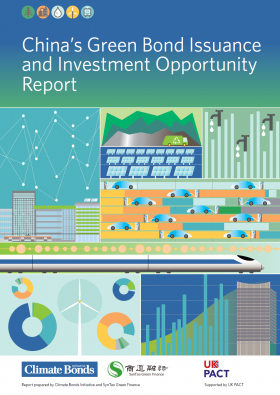Green infrastructure presents a huge investment opportunity globally. However, there remains a lack of identifiable, investment-ready and bankable projects as well as a lack of understanding of what types of assets and projects qualify for green financing.
This report aims to highlight green investment opportunities in China. By so doing, it aims to clarify what is green and promote green bond issuance as a tool to finance green infrastructure. It aims to facilitate greater engagement on this topic between project owners and developers, and institutional investors. Green opportunities and corresponding green finance instruments are explored in the report, with sector-by-sector investment options presented.
Report highlights
- Green has become an imperative for the transition and development of the economy as one of China’s five major development concepts. By 2030, China is expected to require RMB3tn- RMB4tn (USD424bn – USD566bn) in green investment annually. Green bonds are an ideal financing tool to support the required investment.
- The 13th Five-Year Plan period has actively incorporated green assets through different levels of sub-plans issued by different central ministries; the emphasis was on energy, transportation, sewage treatment, waste treatment and green buildings.
- The post-Covid-19 era will see China support the construction of new infrastructure, and the potential for green bond issuance will be broader.
- As of July 2020, six provinces and nine regions were approved as green finance pilot zones. The green finance pilot zone programme is unique to China and provides an opportunity to test specific strategies locally, before rolling them out nationally. Many opportunities for green investment have emerged in these zones.
- The Covid-19 pandemic will lead to a record number of government special bonds in 2020. Many of these special bonds have the potential to be labelled as green bonds.
- China has led the world in kickstarting a domestic green bond market with robust policy support including clear definitions and strong regulatory guidance for green finance. The next phase of the market’s growth will require local and global harmonisation as well as tightening of green definitions, credit enhancement to enable medium-sized issuers into the market and greater efforts at market awareness and transparency.
